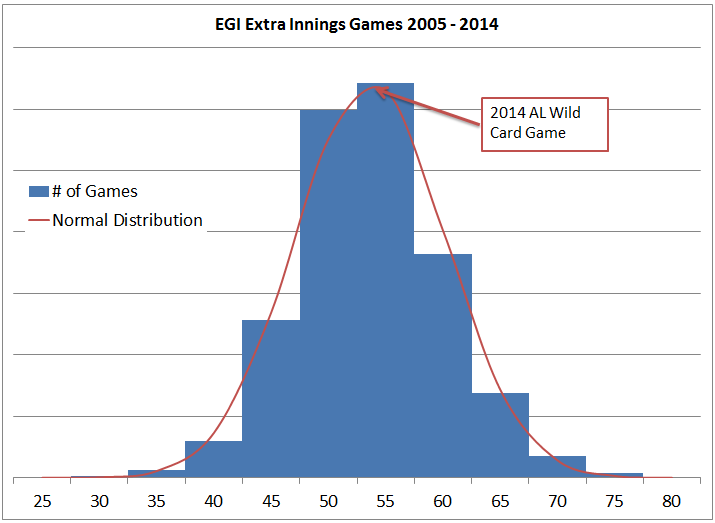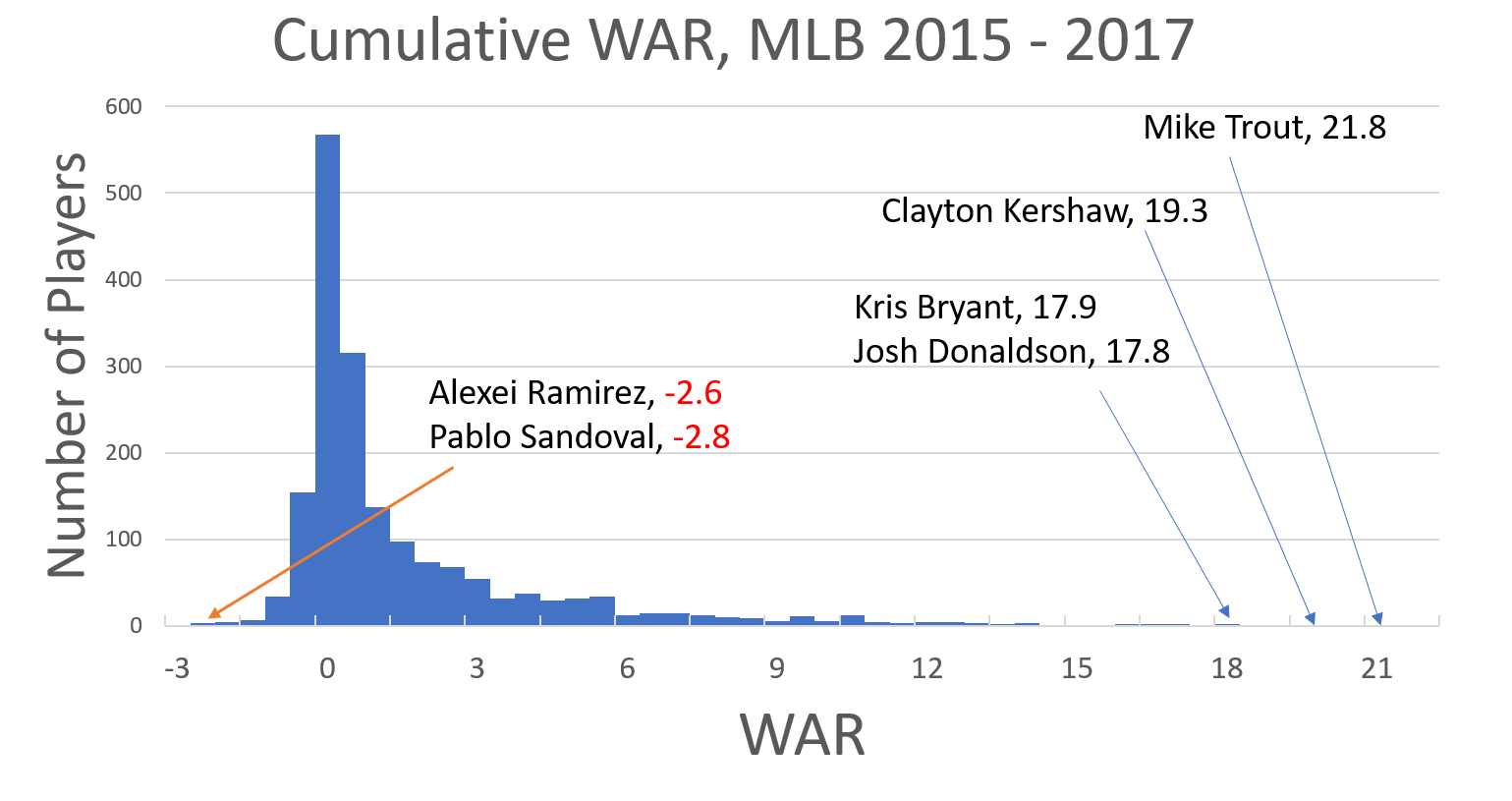In a word, no. But that doesn’t mean it wasn’t one of the best games of the year.
Many people watched the Royals beat the Athletics in 12 innings on Tuesday night and proclaimed it as the most exciting game of the year. It was an incredibly exciting game, but clearly not the most exciting game. How does it compare to the other 2427 games played this year? How does it compare to the other elimination games in baseball history?
The AL Wild Card game scored a 52.20 on the Exciting Game Index (EGI), which is calculated by taking summing the difference in Win Probability on each individual play, and dividing by the total number of plays in the game. Thus, a game where it’s never in doubt (like the Giants/Pirates NL Wild Card game which scored 15.58) will have a low score, and a game like the Royals/Athletics game, where the lead kept changing, will have a high score. EGI 33.6 is the decade historical average, with a minimum of 6.59, and a maximum of 73.78.

I swear, it won’t be this hard.
The distribution of games (2004-2014) follows a roughly normal distribution (bell curve) as shown below. The 52.20 for the AL Wild Card Game puts it near the top of the chart – actually in the 93th percentile for exciting games since 2004. It is ranked 1,765th out of 26,727 games played (including playoffs).

Unsurprisingly, most of the very exciting games need extra innings to be decided. There are large swings in extra innings, as even 2-out baserunner will dramatically improve a team’s win probability. The average extra innings game has an EGI of 51.15, and the below distribution. In fact, only 9 games out of 2,334 extra innings games are lower in excitement than the average game (EGI 33.6). It is worth noting that there were 775 (3.2%) of 9 inning games that were more exciting than the AL Wild Card Game. If you knew that the 2014 Wild Card game was going to go into extra innings, you would have expected a game of roughly this caliber. It is right in the middle of the distribution, ranked 891st out of 2,115 extra inning games this decade.

The real drama, as many have pointed out, was not derived from the actual game, but from the win-or-go-home nature of the one-game playoff. There have been 16 one-game playoffs in history. As a result, the population isn’t big enough to do a fair comparison for this game. However, the playoffs provide a proxy, as the importance of each game is extremely high compared to a 162-game regular season. Since 1903, there have been 1406 playoff* games. When compared to all playoff games, the game ranks in the 93rd percentile. The average was 33.9, which is very close to the 33.6 historical average EGI.

*includes all playoff series, all one-game playoffs, and all Wild Card playoffs (since 2012)
Lastly, there are the Game 7s (or Game 5s in some series) where both teams have to win. The population is getting very small now, only 100 games, and the AL Wild Card game holds up against other high pressure situations, showing up as the 9th best do-or-die game in history.
There are two recent one-game playoff situations that show up higher than the 2014 Wild Card game. The 2007 one-game playoff between the Rockies and the Padres, which went 13 innings (EGI 58.66) and the 2009 one-game playoff between the Twins and the Tigers, which went 12 innings (EGI 72.81). The 2009 game is the highest ranked playoff game of all time. It is also the second highest ranked of any game in the last decade.
Given the stakes – both teams must win – and the level of play, it’s not hard to conclude that the 2014 AL Wild Card Game between the Royals and the Athletics was a game that should go down in history as one of the most exciting ever played, but the “Best Game Ever” title still belongs to the 2009 one-game playoff between the Twins and the Tigers.








